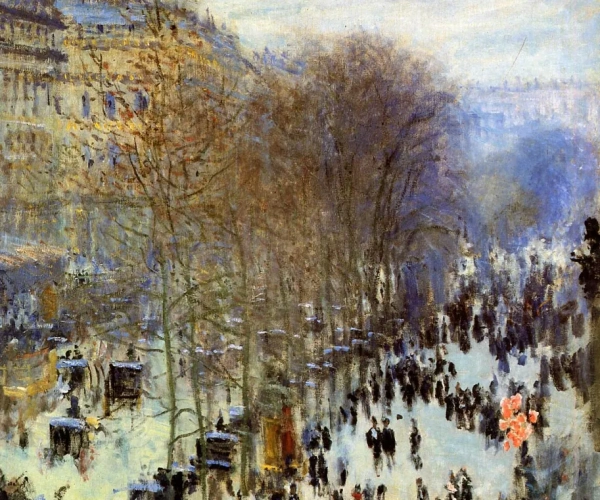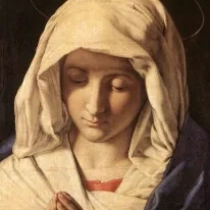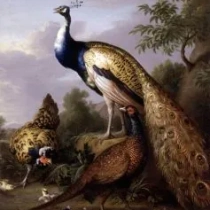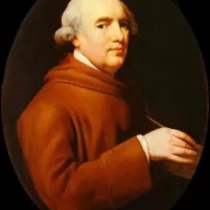Boulevard des Capucines 3
Claude Monet's "Boulevard des Capucines," an exemplary work of the Impressionist movement, encapsulates the fleeting essence of modern Parisian life in the late 19th century. Monet, a pioneer of Impressionism, sought to capture the transient effects of light and color, diverging from traditional artistic conventions. In "Boulevard des Capucines," he employs a palette of muted yet harmonious colors, evoking the chill of a winter day in Paris. The brushwork is rapid and spontaneous, with brisk strokes that give a sense of immediacy and movement, characteristic of Impressionist technique.
Monet's viewpoint is elevated, possibly from a balcony, overlooking the bustling boulevard. This perspective allows him to capture not only the physicality of the urban landscape but also the dynamic energy of city life. The composition is less about the detailed portrayal of the boulevard and more about the overall atmosphere. Buildings, carriages, and figures are rendered with a degree of abstraction, dissolving into the play of light and shadow. This approach reflects Monet's interest in the effects of light on the urban environment, a theme central to his artistic exploration.
"Boulevard des Capucines" is also notable for its historical context. The painting was displayed in the first Impressionist exhibition in 1874, marking a significant moment in the art world. This exhibition was a bold move by Monet and his peers, who were often rejected by the traditional art establishments of the time. By showcasing their work independently, they asserted the value of a new artistic vision, one that emphasized personal perception and the beauty found in everyday life.
In essence, "Boulevard des Capucines" is more than just a visual representation of a Parisian street; it is a testament to Monet's innovative spirit and his commitment to capturing the ephemeral beauty of the world around him. The painting stands as a pivotal piece in the Impressionist canon, illustrating the shift in artistic focus from the realism of the tangible world to the fleeting impressions of light and color.







No Comments Yet...